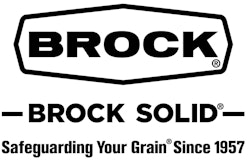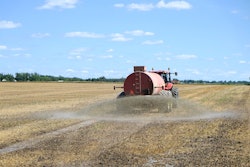
A new winter oilseed crop with the potential to boost a farm's soil health and provide oil for the animal feed and biofuels market is adding acres in 2023.
A team of researchers, led by Dr. John Sedbrook, atIllinois State Universityare working to rapidly domesticate pennycress using cutting-edge genetic approaches.
Pennycress, the Wonder Weed
If successful, pennycress, sometimes called a wonder weed, could become a commercially grown oilseed-producing cover crop with the potential to be an economic benefit to farmers and an environmental gift to the world, reportsIllinois State University.
The importance of pennycress is in part due to its potential to produce billions of gallons of biofuels while removing carbon dioxide from the atmosphere as it grows.
In addition, winter planting of pennycress could lessen soil erosion and nutrient runoff, a major source of pollution in the Mississippi River basin, which cuts a massive swath through the middle of the country.
Planted in fall, harvested in spring
According toreports,CoverCress, Inc.(CCI), based in St. Louis, has turned pennycross into a cash crop first planted last fall and harvested from a 1,000-acre planting this spring.
“They have enough seed now to be going on 10,000 acres this fall. And the goal is to be on 3 million acres in the Midwest here by 2030. That's ambitious. But certainly, we can get a portion of that assuming things go as they are going,” said Sedbrook.
This renewable oilseed and animal feed crop has a winter annual growth cycle, allowing it to fit into an existing corn and soybean rotation. It is planted in the fall, vernalizes over the winter, flowers, sets seed in the spring, and is harvested just ahead of spring crop planting.
The CoverCress crop sequesters carbon and prevents further organic soil carbon loss through cover-cropping. Additionally, it delivers the ecosystem benefits of a traditional cover crop by mitigating soil erosion, improving soil health, and reducing water and nutrient movement.
Protein for animal feed
Covercress produces oil that can be used for food based on genetic changes made at Illinois State and at the University of Minnesota, Sedbrook toldWGLT.
“You sell the oil and the meal. The protein will be used as animal feed. The oil can be used for renewable diesel. And there's a huge market for renewable diesel,” said Sedbrook.
Containing 30% oil and a protein composition like canola, CoverCress grain has a unique feature that sets it apart: an ultra-low carbon intensity score.
CoverCress oil is a crucial feedstock source for increasing the production of renewable fuels like renewable diesel and sustainable aviation fuel.
Partnership with Bunge & Chevron
Last spring,Bungeand CCI announced a unique commercial partnership to bring the new renewable oilseed and animal feed crop to market.
The agreement establishes a long-term commercial relationship between the two companies and supports the expansion of the CoverCress technology.
“Bunge is pleased to expand our relationship with CCI to continue to develop next generation lower carbon feedstocks, which will also help meet the growing demand for renewable fuels," said Greg Heckman, Bunge CEO.
"We believe rotational cover crops will play a key role in our strategy in connection with the recently announcedpartnership with Chevron. Together, we share a commitment to sustainability and reducing carbon in our value chains."
How this fits in with Chevron JV
Complementing the commercial agreement between Bunge and CCI, Chevron U.S.A. Inc., a subsidiary ofChevron Corp., also acquired an ownership stake in CCI through the Series C-1 financing round.
Bunge and Chevron haveannounced a joint venturethat will produce feedstock to supply the rapidly growing renewable fuel industry.
“This investment in CCI advances our efforts to secure a diversified source of lower carbon intensity, reliable feedstocks for our forthcoming joint venture with Bunge," said Mark Nelson, executive vice president of Downstream and Chemicals for Chevron.
Under the commercial partnership between CCI and Bunge, CCI will supply CoverCress grain produced under contract with farmers to Bunge for processing.
Farm-to-fuel supply chain for CoverCress
The strategic partnerships among Chevron, Bunge and CCI create a dedicated farm-to-fuel supply chain for the low carbon intensity oil feedstock produced from CoverCress grain.
“The advancements in the development and performance of our climate-smart agricultural product we have branded as CoverCress, coupled with the expansion of our strategic partnerships with Bunge and Chevron, will accelerate the pace of our commercialization efforts with growers as well the value proposition of our company," said Mike DeCamp, CCI’s CEO.
“农民们让我们CoverCress te的关键chnology to make a difference to lowering the carbon intensity of diesel and jet fuel. That is why this agreement is so critical — it enables us and our farmer partners to earn more from the distinctive aspect of our ultra-low carbon grain than just a commodity value.”






















